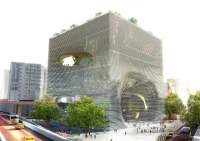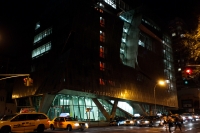A Spectator Sport: FC Bate Borisov Stadium by Ofis arhitekti
Thu, Dec 30, 2010In just about every part of the world not the United States -- the only country that dares to use the word "soccer" -- the sport of football makes for extremely important events. It is no surprise that many football stadiums feature impressive architectural design, such as the Bird's Nest National Stadium for the 2008 Beijing Olympics by Herzog & de Meuron and the World Cup 2010 stadium in Johannesburg, South Africa, by Populus (formerly HOK Sport) with local firm Boogertman & Partners. Soon to join that list is the FC Bate Borisov Stadium in Belarus by Ofis arhitekti, a Ljubljana, Slovenia-based firm founded by Rok Oman and Spela Videcnik in 1998.










